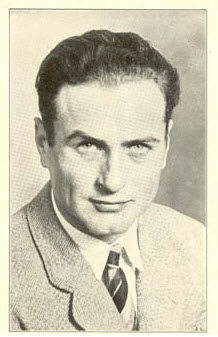The Don’ts of Aviation
I am a sucker for old books, especially related to aviation. I recently purchased “Modern Flight” by Cloyd P. Clevenger. My copy was printed in 1941 but I believe it was first published by Alexander Industries in 1927. Modern Flight is a manual (one of the very first) on “Practical Flying”. Four chapters on everything from “S turns across a road” to “Vertical Reversements”. I’ve learned a little bit about the author and simply put, he was a stud. Davis Monthan Aviation Field Register has put together some great information about him. Clev started by flying gliders in high school and then for the next 40 years had just about every flying job imaginable. He estimated that in his career he flew some 1.3 million miles.
In one of the last paragraphs near the end of this book Mr. Clevenger lists 19 “Don’ts” of aviation. As I read through them this afternoon I thought how 80 years later these are still very applicable today. Here is the excerpt from “Modern Flight” by Cloyd P. Clevenger:
The greatest part of this book has been dedicated to teaching you the actual art of flying. However, of equal importance to your flying ability is your knowledge of the “Don’ts” of aviation and your constant use of the good judegement regarding these fundamental laws. Whether you have one hour or thousands of hours of piloting experience, you should not disregard these “Don’ts”:
- Don’t fail to inspect the ship for flaws, lack of cotter pins, etc. before taking off for a flight
- Don’t take off until you have personally checked to see if you have sufficient gas and oil.
- Don’t take off with a cold motor.
- Don’t taxi fast.
- Don’t try to turn back into the airport in the event of motor failure on the take-off.
- Don’t make a gliding spiral at too low an altitude
- Don’t bank steeply or climb steeply near the ground.
- Don’t stall a ship and “hang” it by the propeller close to the ground.
- Don’t pull the stick back if the ship settles in bad air on the take-off.
- Don’t fly roughly or handle the motor roughly.
- Don’t try to stretch out a glide.
- Don’t skid or slip on your turns.
- Don’t fail to keep your eyes on the lookout for other ships all around you whether in the air or on the ground.
- Don’t confuse air speed with motor speed.
- Don’t stunt unless you are flying an airplane built for acrobatics.
- Don’t stunt near the ground.
- Don’t pull a ship out of its dive too sharply in recovering from acrobatics.
- Don’t fly if you are sick or feel loggy.
- Don’t forget your responsibility and get reckless.
Wow. Remember, this was written over 80 years ago but what really has changed? We might have fancier avionics and air bags in our shoulder straps but really, I can’t think of one thing on that list that is not applicable for today’s pilot. How many pilots lives could have been saved by following these “Don’ts” of aviation?
Thank-you Mr. Clevenger for creating a timeless list of aviation truths.
Fly Safe and Don’t forget the Don’ts!



The 19 don’ts of aviation — Golf Hotel Whiskey on Oct 07, 2009
[…] advances. This includes the basic principles of aviation safety as Paul, the blogger behind AskaCFI.com, recently noted after he purchased a 1941 printed copy of “Modern Flight” by Cloyd P. Clevenger […]
Zach on Oct 10, 2009
I love the fact that no matter how old these truisms are the principles remain to be true. My favorite aviation book to this day is Stick and Rudder. I don’t think there is another book out there that explains the principles of flight and aerodynamics more clearly.
John Craparo on Mar 12, 2010
I have a copy of Cloyd Clevenger’s book which he signed in 1941 for Capt. James Burch who was the commander at Ballinger, TX. The book is great in many regards, including the period illustrations.
MaggotCFII on Feb 18, 2011
I have a copy of the 1928, 2ed, 1st printing. Ch 16 has the “Don’ts”, interesting in that there are only 16 of them. Looks like the following were added to your 1941 edition.
Don’t taxi fast – Don’t make a gliding spiral at too low an altitude – Don’t fly if you are sick of feel loggy
Also in the book, the “Helpful Hints on Airplane Motors” by Jos.Leonard is worth a historical read.